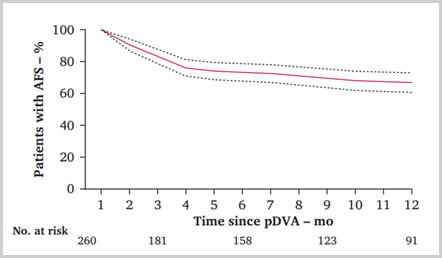Short- and mid-term outcomes of percutaneous deep venous arterialisation for no-option chronic limb threatening ischaemia
Selected in ESVS Journal by Ines Mechcourt
This article presents a meta-analysis on percutaneous deep vein arterialization (pDVA), an advanced technique for treating end-stage chronic limb-threatening ischemia (CLTI) in patients without revascularization options, assessing its feasibility and clinical outcomes using time-to-event analysis.
References:
Authors: Junji Tsukagoshia, Martin Orrukemb, Junichi Shimamurac, Eric A. Secemsky, Tatsuya Nakamae, Yujiro Yokoyamaf, Hisato Takagig, Toshiki Kuno
Reference: European Journal of Vascular and Endovascular Surgery - Published online August 8, 2024
DOI: 10.1016/j.ejvs.2024.08.001
Read the abstractObjectives:
To examine the clinical effectiveness of pDVA for patients with end-stage CLTI.
Population:
Ten non-randomised studies from MEDLINE, Embase, Google Scholar, and Cochrane databases were included, with 351 patients.
Endpoints:
The primary endpoint of the article is amputation-free survival in patients with chronic limb-threatening ischemia (CLTI) who underwent percutaneous deep venous arterialization (pDVA).
Outcomes and conclusion:
This meta-analysis demonstrated acceptable feasibility for no-option CLTI at highly specialised institutions for patients undergoing pDVA.

Get the latest clinical cases and breaking news delivered straight to your inbox!


Comments:
The pDVA technique shows promise for patients without revascularization options, with high technical success and reasonable survival rates.
However, it has low patency and requires frequent reintervention. Limitations include low evidence certainty, a need for specialized centers, and rigorous post-operative care.